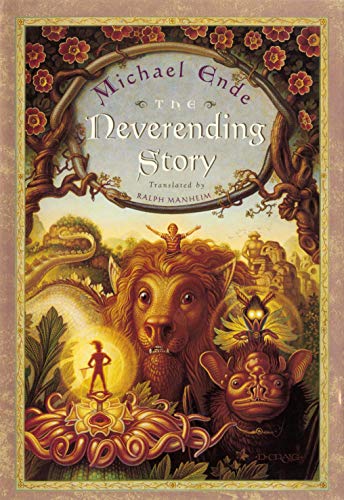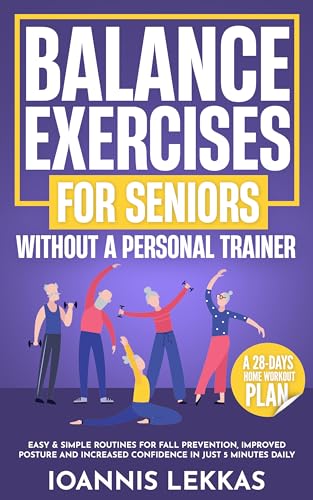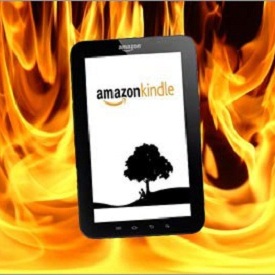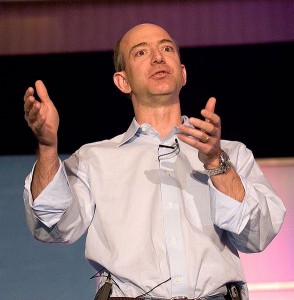Amazon’s press office staffers have been earning their keep this month — the company has put out 16 press releases already in August, including 10 in the last 11 days, after averaging 11 per month during the first half of 2012 — but the real heavy lifting lies in the work that’s being done to prepare for what may become Amazon’s biggest press conference ever next Thursday, September 6.
Based on what we’ve seen from Amazon in the last few weeks, combined with developments like the release of Google’s Nexus 7 tablet in July, we’re fully prepared for a blockbuster event that, among other things, should feature
- the release of a brand new Kindle tablet (to succeed the suddenly sold out Kindle Fire 1),
- updated eInk models including one or more with a front-lit display to remove any slight hardware advantage held by Nook’s Glowlight feature, and
- major enhancements to Amazon Prime that could have the effect of transforming customer experience across the entire Amazon Store.
As a Kindle Nation Daily reader you will be well represented at next week’s press conference in Santa Monica, with KF-KND editor April Hamilton and contributing editor Len Edgerly (of The Kindle Chronicles) on the scene (April for same-day coverage and Len for an onsite interview that will be featured in the following Saturday’s Kindle Nation Weekender), and associate editor Candace Cheatham and myself stirring the pot from KND world headquarters.

Part of the challenge for Amazon in such an event is to find a way to distill dozens or even hundreds of product enhancements, feature roll-outs, and new or significantly expanded services into a single compelling story that Jeff Bezos can present to the world from a single stage within, one hopes, a single hour. Our expectation that this could be “Amazon’s biggest press conference ever” is based in large part on the impressive breadth of groundbreaking new announcements that the company seems poised to make, but figuring out how Amazon could break all that ground without stories A and B stepping on stories C, D, and E is way above my pay grade, and perhaps even Bezos’.
And we could be totally wrong, but we can’t think of any way that Amazon could layer an announcement like a new Kindle phone or, say, the acquisition of Spotify AB on top of the aforementioned items without totally losing focus on its various Fire, eInk, and Prime announcements. The image that comes to mind for me is of Henry Ford holding a press event to announce the Model A but also, at the same event, announcing the Model T, the Thunderbird, the Lincoln, the Falcon, the F-150 and more. Wouldn’t the glut of messages have made them all the Edsel? But it may be that we on the outside just lack sufficient imagination.
So let’s start with Amazon Prime.
“Amazon Prime is the best bargain in the history of shopping,” said Jeff Bezos again this week in one of Amazon’s press releases, and this time he teased us — and perhaps next week’s press conference as well — by adding the line “and it’s going to keep getting better.”
Better how?
Over the past five years many of us have come to understand Amazon’s Kindle and now the Kindle Fire as a seamless, friction-free, almost instantaneous content delivery system for a growing catalog of entertainment and/or educational content that began with ebooks and now includes newspapers and magazines, blogs, audiobooks, music, movies, television programming, games and productivity apps, and other web content. Of course all of that content, in order to be deliverable almost instantaneously to handheld devices with no transmission or data cost, is digital in one way or another.
But Amazon is far from just a digital store: it has grown the rest of its retail store relentlessly across a growing number of departments, platforms and nations, with the result that it now offers tens of millions of physical products in nearly every imaginable category. And until Jeff Bezos and his team of innovators manage to turn Amazon into Nanozon by coming up with some way of digitalizing and then reifying physical products via some new wireless manufacturing-via-quantum physics functionality, Amazon Prime may offer the company and us its customers the best chance to revolutionize delivery, even if it doesn’t quite hit the “nearly instantaneous” sweet spot.
One possibility would be a major expansion of expedited Prime shipping options such as Amazon’s remarkable $3.99 overnight delivery service and the same-day delivery program that is now available for some products in the cities of Baltimore, Boston, Chicago, Indianapolis, Las Vegas, New York City, Philadelphia, Phoenix, Seattle and Washington, D.C.
Part of the trick for Amazon is to build as much value as possible into its Amazon Prime buffet while avoiding any increase in the same $79 per year membership price with which it kicked off Prime back in 2005 when its only real offering was free two-day shipping on about a million selected items. It’s a major feather in Amazon’s cap that the program is still just $79 seven years later with 15 million eligible items and the much newer additions of 22,000 free movie and television offerings under Prime Instant Video and 180,000 Kindle titles that can be borrowed free (up to one per month with no due dates) via the Prime-eligible Kindle Owners Lending Library.
Another possible addition to Prime features might involve the offering of 3G or 4G Kindle Fire connectivity for Prime members. Such an offering would be costly, but we always pay attention to what Amazon CEO Jeff Bezos has to say, and we thought it was very significant when he told our contributing editor Len Edgerly in an exclusive interview earlier this summer that, of all of the company’s customers, the people who read the most (or buy the most books) are people who buy “our 3G version of the Kindle.”
“And the reason, I think, for that,” Bezos said, “is that it makes getting books even more frictionless, makes it even easier. You don’t have to look for a WiFi hotspot. You can just get them wherever you happen to be. And it roams globally at no charge, so people can figure that out, too, and get it wherever they are, even if they’re traveling around the world.”
Part of the DNA that has made Bezos and Amazon so successful, of course, lies in the capacity to take a conclusion like that one and extrapolate that adding 3G or 4G wireless connectivity for a new deluxe Prime-compatible Kindle Fire would almost definitely have a similarly salubrious effect on the shopping behavior of its owners for other content and products, both digital and physical, in the Amazon store. It remains to be seen whether Amazon could make free 3G or 4G wireless connectivity work for its tablets the way it has worked for the Kindle 3G and Kindle DX, but even limited connectivity to the Amazon cloud and the Amazon store would be a significant start. If Amazon could offer unlimited connectivity across the entire web, market share for the Fire tablet family would quickly grow well beyond the benchmark the company announced this week: “Kindle Fire has captured 22% of tablet sales in the U.S.”
Then there’s the very significant fact that the press conference is being held in Santa Monica, rather than in New York like past Kindle press conferences and announcement events. We don’t think the LaLa-land location is any accident, so we’re expecting that the event will include some real Hollywood star power, perhaps in support of original video content that might be free to Amazon Prime customers for viewing on the Kindle Fire and other devices — say, an original docudrama series based loosely on the agency model pricing conspiracy, directed by Steven Spielberg and starring Tommy Lee Jones, Meryl Streep, and John Lithgow?
Nor would we be surprised to see some stars onstage as voice actors in association with even greater Kindle integration and expansion of Amazon’s Audible.com subsidiary, following on the recent Audible roll-out of its “A-List” program of performances featuring Colin Firth, Anne Hathaway, Kate Winslet, Samuel L. Jackson, Dustin Hoffman, Susan Sarandon, and Jennifer Connelly.
No doubt it will all be great fun, and it may lead Amazon’s share price to rise even further beyond its current all-time high levels, but don’t get us wrong: after the confetti has landed and helium balloons have attached themselves to the ceiling, the event should be largely about the Kindle and especially a new Kindle Fire. Although Amazon announced this week that it is “sold out” of the Kindle Fire, this “sold out” status is not quite the same as the “sold out” status that occurred in November 2008 (and lasted for months) after Oprah went Gaga over the original Kindle. This time it is clearly the case of Amazon pulling the Kindle Fire’s Buy button ahead of the announcements contemplated by Bezos when he said in a release this week: “Kindle Fire is sold out, but we have an exciting roadmap ahead—we will continue to offer our customers the best hardware, the best prices, the best customer service, the best cross-platform interoperability, and the best content ecosystem.”
So what about that exciting roadmap? We’ll certainly be paying close attention to see how much adoption Amazon announces of the ideas noted in our July 23 piece entitled 17 Features Amazon Must Add to the Next Kindle Fire, After Google Raises the Bar with the Nexus 7 Tablet. But even that list now seems so July 23 that we’ll expand on it a bit here and suggest the following killer feature set for a brand new Fire:
- Slim it down
- Lighten it up
- Improve screen resolution
- Speed up the processor
- Improve web functionality with less reliance on truncated “mobile” representations
- Allow an SD Card
- Offer 3G/4G wireless connectivity, possibly free with Amazon Prime
- Keep the $199 price point for the new 7” Fire and offer a larger Fire for under $250
- Allow greater user control of font sizes on the web and in apps
- Allow full input/output functionality for apps such as Google Docs/Google Drive documents
- Enhance curb appeal so that teh Fire looks and feels as good as the Nexus 7
- Add external volume controls
- Provide camera functionality similar to that on the iPhone
- Provide Siri/Iris Capability that hits the sweet spot both for information and for commerce
- Add a microphone
- Add Text-to-Speech
- Place the power switch (and an external volume control) on the upper right edge
- Allow greater user personalization and customization
- Add full-featured GPS for a 3G or 4G model
- Add maximum Android platform compatibility
- Add access to Google’s Android Market
- Seize every available opportunity to make the Fire a replacement for netbooks and notebook computers
See what we mean? Even half of that is a lot to announce in one day. And there are plenty of other possibilities, including even the possibility of a dual screen tablet/eInk combo, but we’d rather see Amazon focus on making each of these very different devices, as well as the Kindle phone that will surely follow, as good as it can be.
Stay tuned.























